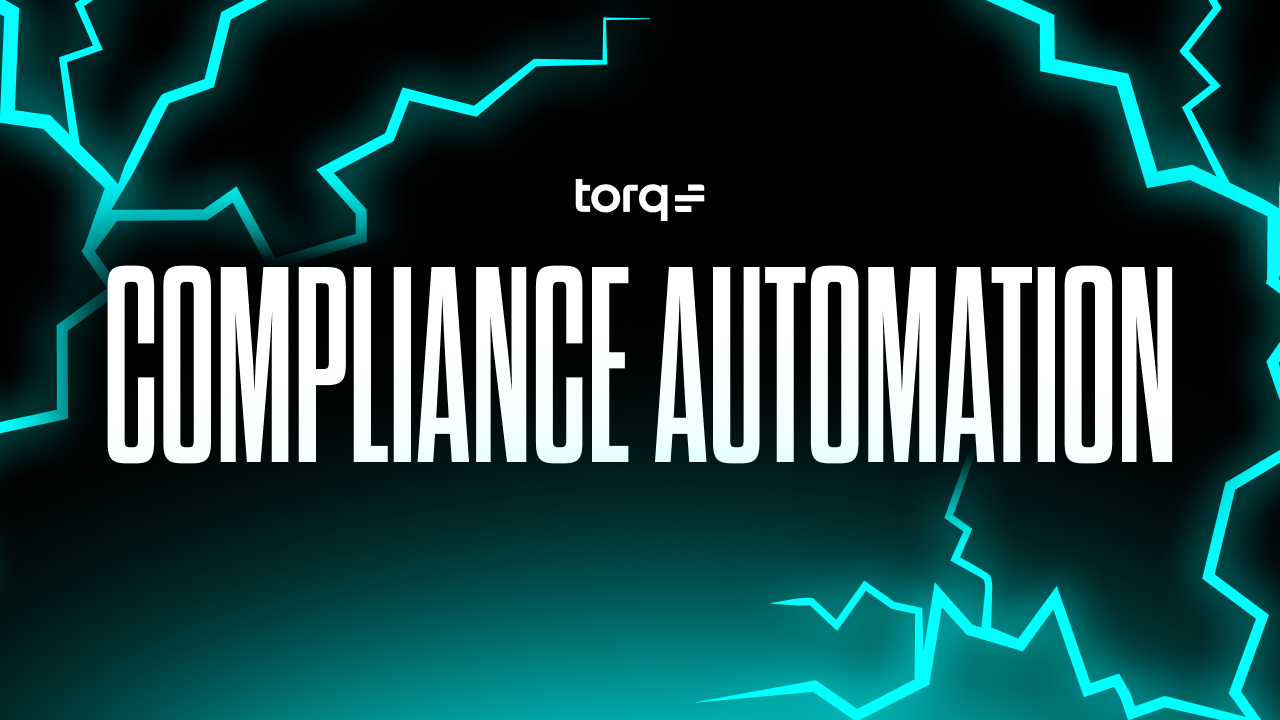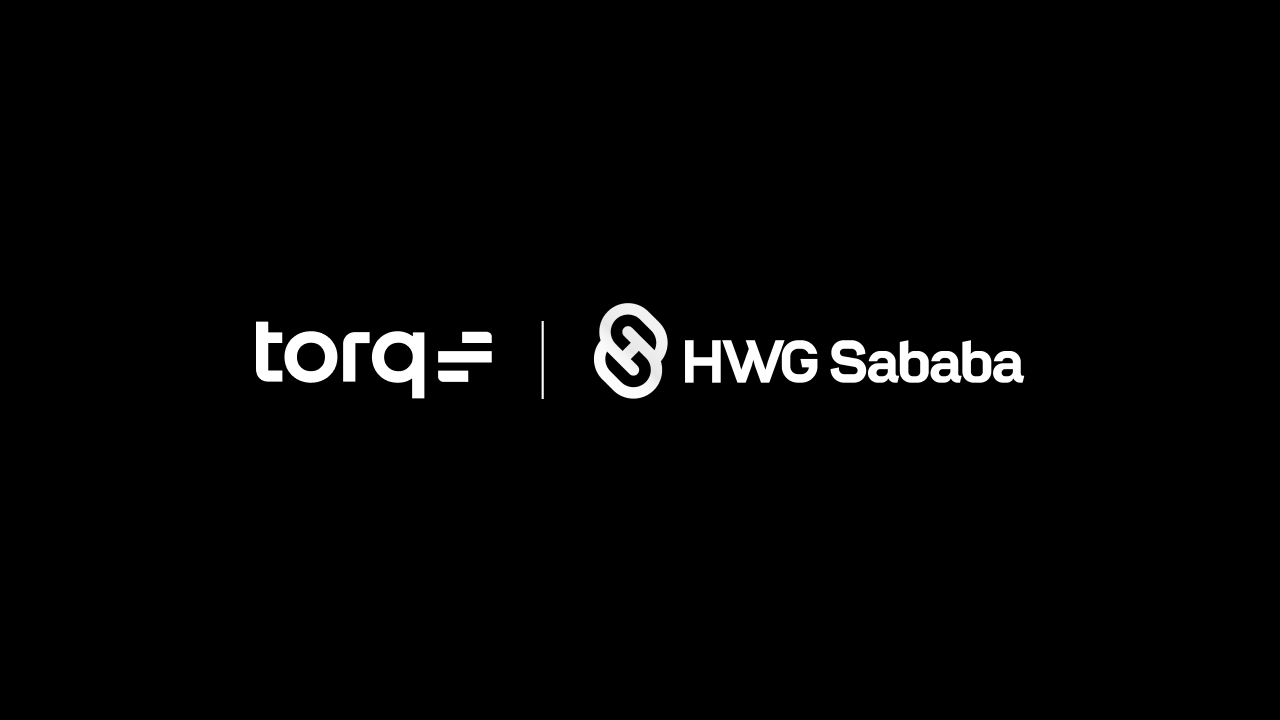Contents
Security compliance isn’t just checking boxes; it’s business-critical to keeping your organization secure, reputable, and operational. Yet, despite how critical regulatory compliance is, many organizations still wrestle with manual compliance management checks. Meet Torq Hyperautomation™: the best thing for streamlining security and compliance regulations.
Imagine waving goodbye to spreadsheets, endless manual tasks, and frantic pre-audit scrambles. Compliance automation replaces outdated methods with security automation tools, freeing your SOC teams to focus on what matters most — securing your organization.
Why Compliance is Still Done Manually
If compliance management is so important, why are many organizations still stuck managing it manually?
Legacy Systems, Siloed Non-Centralized Teams, and Spreadsheets
Organizations frequently rely on legacy systems designed before modern regulations and threats. These outdated tools often don’t integrate smoothly with newer systems, making automation challenging. Add to that the problem of teams — including finance, IT, HR, and security — all working in isolation and independently tracking compliance tasks through spreadsheets and manual logs. The result is a fragmented, error-prone compliance management process that wastes time and resources.
Constantly Evolving Regulations (HIPAA, SOC 2, GDPR)
On top of internal challenges, industry regulations like HIPAA, PCI DSS, SOC 2, GDPR, and others are always changing. Keeping pace manually is nearly impossible. Changes to compliance frameworks are frequent and complex, demanding continuous updates to policies, procedures, and reporting. Manual processes simply can’t keep up, resulting in risks of non compliance and potential fines or reputational damage.
What is Compliance Automation?
Compliance Automation
Compliance automation is using technology to streamline and automate the process of adhering to regulatory standards and internal policies. It involves leveraging software and AI to manage compliance-related tasks, reducing manual effort and improving efficiency. This includes automating tasks like documentation, risk assessments, reporting, and controls testing.
Key features of compliance automation include:
- Automated evidence collection: Automatically gathers data and logs across systems to demonstrate compliance with industry standards and frameworks like SOC 2, ISO 27001, HIPAA, PCI DSS, or GDPR.
- Real-time monitoring: Continuously monitoring configurations, access controls, and activity logs to detect violations, vulnerabilities, and enforce real-time policy adherence.
- Workflow orchestration: Executes predefined actions when compliance issues are detected (e.g., revoking access, sending alerts, and opening tickets).
- Audit readiness: Maintains organized, timestamped documentation and audit trails to simplify preparation and reduce disruption.
- Cross-system integration: Connects with critical tools to centralize compliance efforts and eliminate data silos.
With Torq, compliance automation becomes more than just a productivity boost. Torq connects with all your critical tools, orchestrates tasks across systems, and ensures nothing slips through the cracks — from missed access revocations to failed encryption checks.
How Does Compliance Automation Work?
Compliance automation leverages software and integrations to streamline the compliance lifecycle, from continuous monitoring and reporting to remediation and documentation. Here’s how it works.
Integrations
Compliance automation pulls critical data from existing security and operational tools like SIEMs, Identity and Access Management (IAM) systems, cloud platforms, and endpoint protection tools. This creates a centralized view of your regulatory compliance posture, eliminating manual data gathering.
Automated Workflows
Automated workflows replace tedious manual tasks, such as collecting evidence for audits, scheduling routine security checks, or sending alerts when compliance thresholds are breached. Tasks that once took hours or days happen automatically, accurately, and consistently.
Continuous Monitoring
Automated compliance continuously monitors environments, detecting and flagging policy violations, vulnerabilities, or deviations. Immediate detection means security teams can address issues swiftly, preventing minor oversights from escalating into major incidents.
Reporting Dashboards
With automated compliance reporting, audit-ready dashboards and reports are generated instantly. You no longer need to spend days compiling documentation; it’s continuously available, making internal and external audits smooth and stress-free.
Remediation and Orchestration
Automation doesn’t stop at identifying issues. It can automatically remediate certain policy violations or vulnerabilities, such as adjusting misconfigured cloud settings, or route complex matters to the appropriate teams along with detailed context, dramatically reducing mean-time-to-resolution (MTTR).
7 Benefits of Compliance Automation
As regulatory landscapes grow more complex and the risks of noncompliance increase, organizations are turning to automation to ensure control, consistency, and clarity across their compliance programs. Here’s how automated regulatory compliance software delivers measurable value.
1. Reduced Compliance Risks
Manual processes leave room for human error, delays, and oversight. Compliance automation software, with automated monitoring and remediation, ensures that violations and misconfigurations are detected and resolved at machine speed. This ensures data protection and minimizes the risk of regulatory fines, reputational damage, and data breaches, especially in fast-paced, cloud-native environments where change happens rapidly.
2. More Efficient than Manual Processes
Automation removes the manual burden from repetitive, time-consuming tasks like evidence gathering, access reviews, control verification, and report generation. This allows security and governance, risk, and compliance (GRC) teams to focus on higher-value work like risk management and strategic policy development. It also improves scalability, making it easier to ensure your environment stays compliant even as your organization grows.
3. Real-Time Data in One Dashboard
Compliance automation platforms provide a centralized, unified dashboard that aggregates metrics, control health, policy violations, and remediation status. This real-time visibility eliminates the need to dig through multiple tools or spreadsheets and empowers teams to make faster, data-driven decisions about risk posture and compliance gaps.
4. Simplifies the Audit Process
Instead of scrambling to prepare evidence during audit season, automation ensures audit-ready documentation is always available on demand. Whether you’re using AuditBoard, Hyperproof, or your own system, automated audit logs and audit trails keep everything neatly recorded and ready to go.
Detailed logs, timestamps, access histories, and control status reports are automatically maintained and updated, making it easier for auditors to verify compliance and significantly reducing the cost, time, and stress associated with internal and third-party audits.
5. Continuous Monitoring of Control Health
Automating compliance provides continuous control, performance, and configuration validation, unlike periodic checks. This ensures that security controls like multi-factor authentication (MFA), role-based access controls (RBAC), encryption, and access policies remain effective. Automation can trigger alerts or remediation workflows instantly, turning compliance management from a static checkbox into a living, breathing process if a control becomes misconfigured or fails.
6. Centralized Single Source of Truth
Compliance automation tools are a centralized repository for all compliance-related activities like tracking issues, documenting resolution workflows, and maintaining immutable audit trails. This unified view eliminates siloed team efforts, improves accountability, and supports a long-term compliance strategy. With all evidence and activity accessible in one place, organizations spend less time searching for data and more time optimizing their security posture.
7. Built-in Scalability
As your business grows, managing compliance becomes more complex. With compliance automation software, scaling doesn’t mean hiring more people — it means deploying more intelligent workflows that extend your reach across every cloud, region, and team.
Real-Time Compliance Monitoring With Torq
Automation tools like Torq Hyperautomation make compliance seamless by enabling real-time monitoring across hybrid and cloud environments. With support for security and compliance workflows out of the box, Torq delivers rapid value to overworked SOC and GRC teams.
With Torq, enterprises gain:
- Limitless integrations: Immediate data sync with tools like AWS, Azure, Google Cloud, IAM solutions, and more.
- Customizable automation workflows: Tailor workflows to your organization’s specific compliance requirements such as PCI DSS, NIST, GDPR, HIPAA, and SOC 2.
- Continuous visibility: Continuous monitoring of your security compliance state, with immediate notifications and contextual information when issues are detected.
- Automated evidence collection and reporting: No more scrambling for audits — automated regulatory compliance software from Torq automatically captures, organizes, and generates audit documentation.
- Intelligent remediation: Automatically address compliance issues or escalate them to human teams with complete contextual data, reducing MTTR and ensuring continuous compliance.
Ready to Ditch Security Compliance Stress? Automate It with Torq.
Compliance automation delivers immediate wins in efficiency, visibility, and risk reduction.
This automation transforms compliance management from a slow, manual burden into an efficient, automated, accurate, and real-time process. By reducing risk, cutting costs, and streamlining operations, compliance automation software lets your security team refocus on strategic initiatives instead of paperwork.
Torq Hyperautomation simplifies security compliance in modern, complex environments. Torq enables teams to effortlessly maintain continuous compliance, secure, scalable, and compatible with hybrid and cloud-based infrastructures.
Ready to automate security compliance and reclaim your time?




